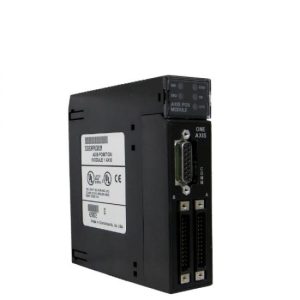Mô đun AB 1746-NT4 , SLC 500 Thermocouple/MV Analog Input Module , 16 Bits In, 14 Bits Out
AB 1746-NT4 , SLC 500 Thermocouple/MV Analog Input Module , 16 Bits In, 14 Bits Out
for 1746-NT4
| Manufacturer | Rockwell Automation |
| Brand | AB |
| Part Number/Catalog No. | 1746-NT4 |
| Series | SLC 500 |
| Inputs | 4 |
| Module Type | Thermocouple/mV Analog Input Module |
| Backplane Current (5 Volts) | 60 milliamps |
| No. of Inputs | Four (4) |
| Backplane Current (24 Volts) | 55 milliamps |
| Compatible Thermocouple Sensors | J, K, T, E, S, R, B and N |
| Update Time | 26 milliseconds-1.2 seconds |
| Compatible miliVolt signal | +/- 50 mV and +/- 100 mV |
| Resolution | 16 bits in, 14 bits out |
| Backplane Current | 0.06 mA @ 5VDC; 0.04 mA @ 24VDC |
| Step Response | 60 milliseconds in, 2.5 milliseconds out |
| Backplane Power Consumption | 0.8W maximum (0.3W @ 5V dc, 0.5W @ 24V dc) |
| Channels | 4 backplane isolated |
| Open Circuit Detection | Zero; Upscale; Downscale |
| UPC | 10612598172693 |
| I/O Chassis location | Any slot except Slot 0 |
| UPC | 10662468165911 |
| Operating Temperature | 0 to 60 degrees Celsius |
| Storage Temperature | -40 to 85 degrees Celsius |
| A/D Conversion method | Sigma-delta modulation |
About 1746-NT4
The Allen Bradley 1746-NT4 is a Thermocouple/mV Input Module for an SLC 500 system. It provides all SLC 500 processors with a digitally converted thermocouple or millivolt (mV) analog data, received and stored in its image table. It does not require any external power supply as it receives 5 Volts DC and 24 Volts DC power from the SLC 500 power supply through its backplane. It has two cold-junction compensation (CJC) sensors instead of offset voltages to retain thermocouple input signal accuracy. Block transfers are required by this module in a remote I/O configuration. It interfaces to thermocouple types J, K, T, E, R, S, B, and N, and accepts direct +/-50 mV and +/-100 mV analog input signals. The 1746-NT4 module auto calibrates at power-up and whenever a channel is enabled. It has 5 green LED status indicators, one for module status and one for each of the four channels.
The 1746-NT4 module has 4 backplane isolated input channels. It has a backplane current consumption of 60 mA at 5 Volts DC and 40 mA at 24 Volts DC. It has a backplane power consumption of 0.3 Watts at 5 Volts DC and 0.5 Watts at 2 Volts DC, a 16-bit converter resolution, and a 12 to 300 millisecond Step response at 95%. It has a bandwidth of 2.62 – 65.5 Hertz and a 26 millisecond – 1.2 second update period and uses sigma-delta modulation for A/D conversion. It can be installed in any slot except slot 0 of the SLC 500 chassis. It uses two wires per terminal with a maximum wire size of 2.5 millimeters (14 AWG) and 25 ohms maximum cable impedance. For Thermocouple inputs, use shielded twisted thermocouple extension wire; for mV inputs, Belden 8761 or equivalent wire must be used.
The 1746-NT4 is an AB module used with Thermocouple sensors and mV signals. This module belongs to analog input module category which belongs to the SLC 500 product family.
It features Eight (8) Thermocouple inputs with each channel supporting a wide variety of Thermocouple types such as J, K, T, E, S, R, B and N. Compatible mV signals include +/- 50 mV and +/- 100 mV. Each input channel is built with broken sensor detection may indicate a shorted or open circuit. There are configurable settings when an open circuit is detected such as Zero, Upscale and Downscale. When Zero is configured, the module’s reading is forced to Zero (0). When set to Downscale, the module’s reading is forced to the lowest reading while Upscale forces the reading to the maximum reading. These settings are helpful as it may be used to quickly diagnose the state of each channel aside from the visible LED indicators for each channel. The fault reaction settings must be based on the fail-safe operation of the process. These settings are configured with the use of RSLogix 500 Programming software.
Individual channel filters may also be set to fine tune the module’s behavior to input. Channel filters are set to minimize the effect of electrical noise and AC lines that may cause fluctuations and erratic readings. Selectable filter frequencies are 250 Hz which offers minimize noise filtering, 60 Hz, 50 Hz and 10 Hz noise filtering. If a Cold Junction Compensation (CJC) input is selected, input filter is ignored.
The 1746-NT4 module has 4 backplane isolated input channels. It has a backplane current consumption of 60 mA at 5 Volts DC and 40 mA at 24 Volts DC. It has a backplane power consumption of 0.3 Watts at 5 Volts DC and 0.5 Watts at 2 Volts DC, a 16-bit converter resolution, and a 12 to 300 millisecond Step response at 95%. It has a bandwidth of 2.62 – 65.5 Hertz and a 26 millisecond – 1.2 second update period and uses sigma-delta modulation for A/D conversion. It can be installed in any slot except slot 0 of the SLC 500 chassis. It uses two wires per terminal with a maximum wire size of 2.5 millimeters (14 AWG) and 25 ohms maximum cable impedance. For Thermocouple inputs, use shielded twisted thermocouple extension wire; for mV inputs, Belden 8761 or equivalent wire must be used.
The 1746-NT4 is an AB module used with Thermocouple sensors and mV signals. This module belongs to analog input module category which belongs to the SLC 500 product family.
It features Eight (8) Thermocouple inputs with each channel supporting a wide variety of Thermocouple types such as J, K, T, E, S, R, B and N. Compatible mV signals include +/- 50 mV and +/- 100 mV. Each input channel is built with broken sensor detection may indicate a shorted or open circuit. There are configurable settings when an open circuit is detected such as Zero, Upscale and Downscale. When Zero is configured, the module’s reading is forced to Zero (0). When set to Downscale, the module’s reading is forced to the lowest reading while Upscale forces the reading to the maximum reading. These settings are helpful as it may be used to quickly diagnose the state of each channel aside from the visible LED indicators for each channel. The fault reaction settings must be based on the fail-safe operation of the process. These settings are configured with the use of RSLogix 500 Programming software.
Individual channel filters may also be set to fine tune the module’s behavior to input. Channel filters are set to minimize the effect of electrical noise and AC lines that may cause fluctuations and erratic readings. Selectable filter frequencies are 250 Hz which offers minimize noise filtering, 60 Hz, 50 Hz and 10 Hz noise filtering. If a Cold Junction Compensation (CJC) input is selected, input filter is ignored.



